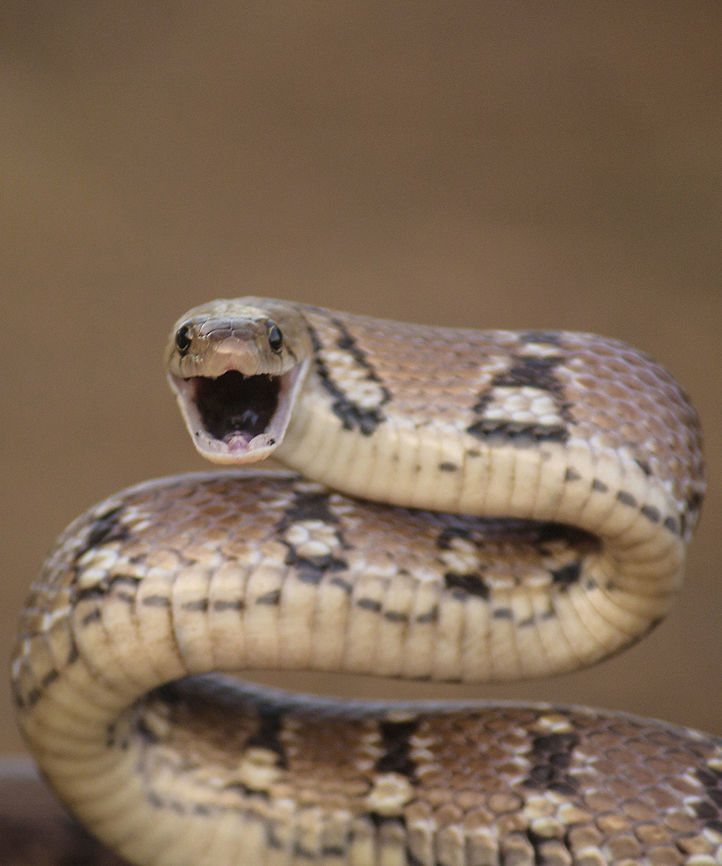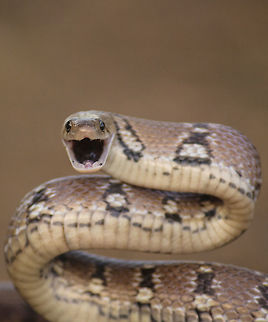 PromotedSpecies introCountry intro
PromotedSpecies introCountry intro
The Montane Trinket Snake
The Montane Trinket Snake | Yeoor Hills, Thane
GODZILLA!!
The Montane Trinket Snake | Yeoor Hills, Thane
Common Name: Montane trinket
Scientific Name: Coelognathus helena monticollaris
Size: - Adult: 70 cm
- When Born: 25 cm
- Maximum: 1.5 m
Non Venomous Snake
Appearance: The light brown body with regular black cross bars. It can be identified by the broad dark stripe running along each side of the hind body to the tail tip, two short and dark parallel stripes on the neck, and an oblique stripe running from each eye to the outer edge of the mouth. Sometimes there may be another vertical stripe below the eye.
Behavior: It is very famous for its threat display but the snake can be handled with care. They do strike repeatedly when threatened. Active by day and night.
Distribution: Endemic to Western Ghats and some regions around (Karnataka, Tamil Nadu, Kerala, Maharashtra and Goa). In Maharashtra found in ever green forests and towns (lonavala). I have found this snake in regions around Maharashtra border like in Hubli and Dharwad.
Habitat: During summers, these snakes inhabit the termite mounds and crevices of rocky places while in winter, they prefer the low lying bushes and trees
Diet: Just like the famous rat snake of America, the trinket is prodigious rodent eating machine. It feeds on rats, lizards and small birds
Reproduction: The female snake lays around 6 - 8 long slender eggs. The young ones resemble the parents. Once a trinket had laid 8 eggs on February 14 and the young ones hatched out of it on April 11. Another snake had laid eggs in the month of December. They have also been spotted laying eggs during August
Status: Trinkets are rarely seen. They like agricultural fields as much as they like forest regions. So the transformation of forest regions into agricultural fields did not affect there survival to a greater extent. Even though they are large and beautiful, they are not killed for the sake of their skin as they are very fewer in number and are rarely encountered
Fang Facts:
Trinkets are very well known for their threat display. When threatened they coil up into a 'S' shaped loop and hiss loudly with an open mouth.
■ The trinket snake is famous for its threat display that can make even an experienced snake-handler step back in admiration
■ Its body gets inflated and flattened to reveal bright white skin under the scales. This bright display increases the apparent size of this small snake and, coupled with spring-like attacking motions of the fore body, is likely to deter most of its common enemies
■ It can be seen in the evening or night when hunting
■ They are often mistaken for being venomous, which is not true. Even the famous snake hunting 'Erula' community believes it is a venomous snake.

''Coelognathus helena monticollaris'' is a non-venomous constrictor subspecies of colubrid snake native to south Central Asia.

comments (2)